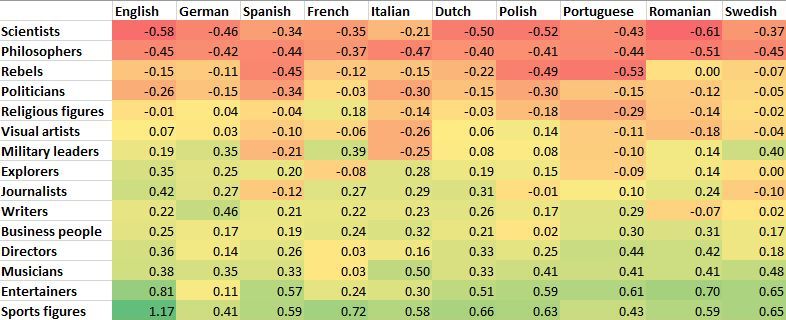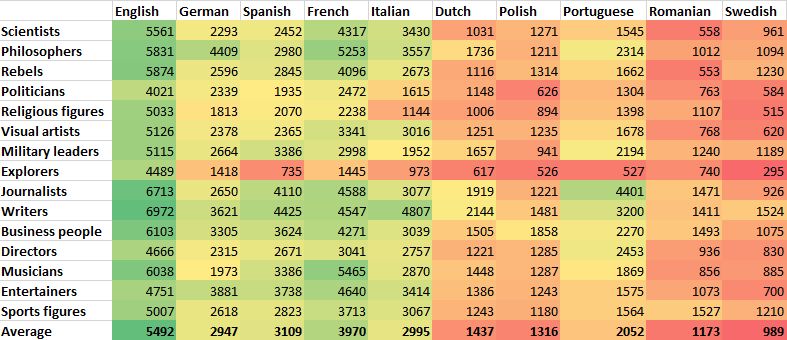Wikipedia:Vital articles/Expanded
| Level 1 | Level 2 | Level 3 | Level 4 |
|
|
Tao Te Ching, Verse 34
The Tao covers the ten thousand things like flood waters.
It flows in all directions.
The ten thousand things depend on it.
The Tao denies none of them.
Laozi
This is a currently incomplete list of ten thousand subjects for which Wikipedia should ultimately have high-quality articles. It expands on Wikipedia:Vital articles, which lists one thousand articles. This list is in the process of being refined and prioritized on the basis of topic-by-topic discussion and voting. Changes can be proposed on the talk page. Everyone is welcome to participate.
Because of its size, Vital Articles/Expanded has been split into eleven sublists. If you spot a duplicate listing, please remove one of them; if you aren't sure in which section a topic belongs, please initiate a discussion on the talk page.
As of April 10, 2017, this list includes 9,889 individual articles, based on the manually entered totals for each of the sublists:
| List No. | Section | April 10, 2017 | Target number |
|---|---|---|---|
| 1 | People | 2,001 | 2,000 |
| 2 | History | 678 | 675 |
| 3 | Geography | 1,161 | 1,200 |
| 4 | Arts | 670 | 670 |
| 5 | Philosophy and religion | 415 | 425 |
| 6 | Everyday life | 480 | 500 |
| 7 | Society and social sciences | 907 | 900 |
| 8 | Biology and health sciences | 1,453 | 1,480 |
| 8.1 | Health, medicine and disease | 246 | 250 |
| 9 | Physical sciences | 1,076 | 1,100 |
| 9.1 | Basics and measurement | 85 | 85 |
| 9.2 | Astronomy | 208 | 215 |
| 9.3 | Chemistry | 260 | 270 |
| 9.4 | Earth science | 257 | 260 |
| 9.5 | Physics | 266 | 270 |
| 10 | Technology | 752 | 750 |
| 11 | Mathematics | 296 | 300 |
| Total | 9,889 | 10,000 |
Counts updated from subpages: RekishiEJ (talk) 13:47, 10 April 2017 (UTC)
Readability[edit]
Leah Borovoi from the infinity labs has analyzed the readability of 1999 Wikipedia vital articles about people in ten European languages using the Flesch Readability formula.[1] In order to compare between languages, the result of the formula was normalized within each language. In the table below, you may see 15 sub-categories of the general category people, and 10 European languages. Higher numbers colored in green mean high readability, whereas negative numbers colored in red mean low readability. In all languages the least readable sub-categories are scientists and philosophers, while the most readable sub-categories are sports figures and entertainers. Military leaders are relatively more readable in German, French and Swedish, but less readable in Italian and in Spanish.
The table below shows the average number of words per article in different sub-categories of "People" category in ten European languages. Green color signals longer articles, while red color signals shorter articles.
References[edit]
- ^ Flesch, Rudolf. "How to Write Plain English". University of Canterbury. Archived from the original on July 12, 2016. Retrieved 12 July 2016.
See also[edit]
- Watchlist for all the sublists: Recentchangeslinked/Wikipedia:Vital_articles/Expanded.
- As with the 1,000-article list, this list has a corresponding Wikimedia project, the 10,000 articles every Wikipedia should have.
- Wikipedia:Version 1.0 Editorial Team/Core topics
- Core 1,000 articles (currently inactive)
- Category:Top-importance articles


